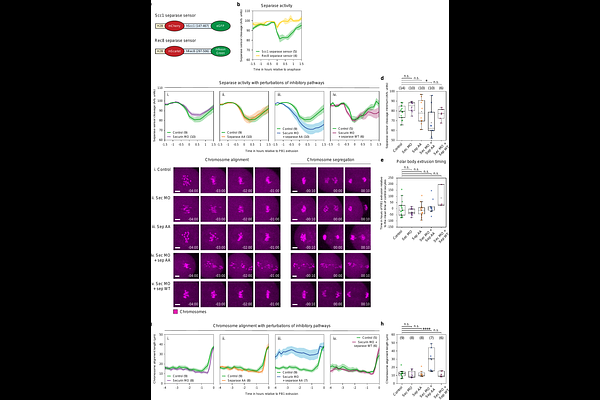Securin and cyclin B1-CDK1, but not SGO2, regulate separase activity during meiosis I in mouse oocytes

Securin and cyclin B1-CDK1, but not SGO2, regulate separase activity during meiosis I in mouse oocytes
Wetherall, B.; Bulmer, D.; Sarginson, A.; Thomas, C.; Madgwick, S.
AbstractDuring meiosis I in oocytes, anaphase is triggered by deactivation of cyclin B1-CDK1 and activation of separase. Active separase plays an essential role in cleaving cohesin rings that hold homologous chromosomes together. Critically, separase must be inhibited until all chromosomes are aligned and the cell is prepared for anaphase I. Inhibition can be mediated through the binding of separase to either securin or cyclin B1-CDK1. The relative contribution of each inhibitory pathway varies depending on cell type. Recently, shugoshin-2 (SGO2) has also been shown to inhibit separase in mitotic cells. Here, we used a separase biosensor and perturbed the three inhibitory pathways during meiosis I in mouse oocytes. We show that inhibition mediated by either securin or cyclin B1-CDK1, but not SGO2, is independently sufficient to suppress separase activity. However, when both the securin and cyclin B1-CDK1 inhibitory pathways are perturbed together, separase activity begins prematurely, resulting in gross segregation defects. Furthermore, we characterised shugoshin-2 destruction dynamics and conclude that it is not an essential separase inhibitor in mouse oocytes. The existence of multiple separase inhibitory pathways highlights the critical importance of tightly regulated separase activity during this unique and challenging cell division.